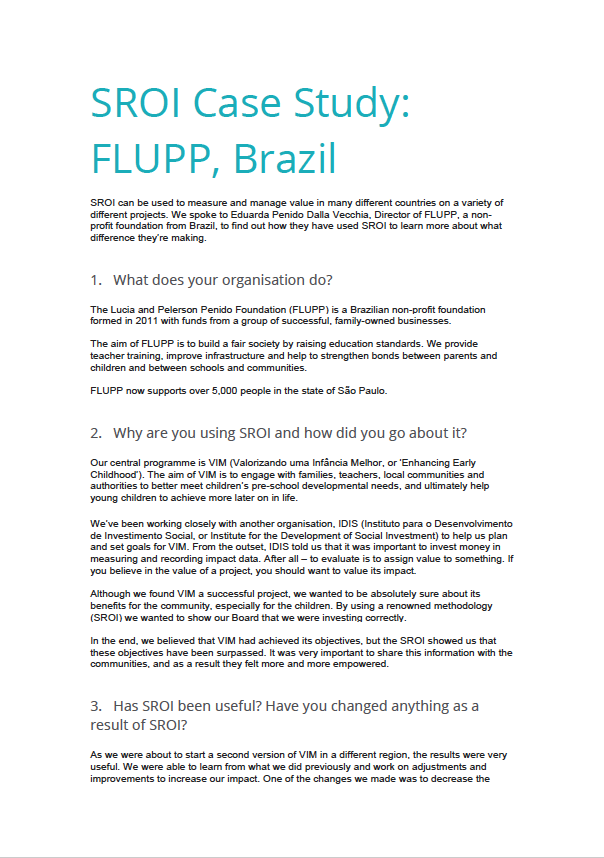
Posted 24th August 2015
SROI can be used to measure and manage value in many different countries on a variety of different projects. We spoke to Eduarda Penido Dalla Vecchia, Director of FLUPP, a nonprofit foundation from Brazil, to find out how they have used SROI to learn more about what difference they’re making.
Below are a few excerpts from the case study.
Why are you using SROI and how did you go about it?
Our central programme is VIM (Valorizando uma Infância Melhor, or ‘Enhancing Early Childhood’). The aim of VIM is to engage with families, teachers, local communities and authorities to better meet children’s pre-school developmental needs, and ultimately help young children to achieve more later on in life.
We’ve been working closely with another organisation, IDIS (Instituto para o Desenvolvimento de Investimento Social, or Institute for the Development of Social Investment) to help us plan and set goals for VIM. From the outset, IDIS told us that it was important to invest money in measuring and recording impact data. After all – to evaluate is to assign value to something. If you believe in the value of a project, you should want to value its impact.
Although we found VIM a successful project, we wanted to be absolutely sure about its benefits for the community, especially for the children. By using a renowned methodology (SROI) we wanted to show our Board that we were investing correctly.
In the end, we believed that VIM had achieved its objectives, but the SROI showed us that these objectives have been surpassed. It was very important to share this information with the communities, and as a result they felt more and more empowered.
As we were about to start a second version of VIM in a different region, the results were very useful. We were able to learn from what we did previously and work on adjustments and improvements to increase our impact. One of the changes we made was to decrease the amount that we invested on infrastructure in the second version of VIM. We decided to do this because the SROI results indicated that infrastructure had less of a direct improvement on children’s development, so the money would be better invested elsewhere.
With the SROI results in hand it’s also easier to talk to people that emphasise numbers and/or need more than subjective inputs to understand and engage with our project.
In some communities it was also important to show that even though we have tough teachers (because of different reasons like political disagreements or resistance to change), there are huge benefits to the project, and it is very important that it continues.
Our full collection of case studies can be viewed here.
